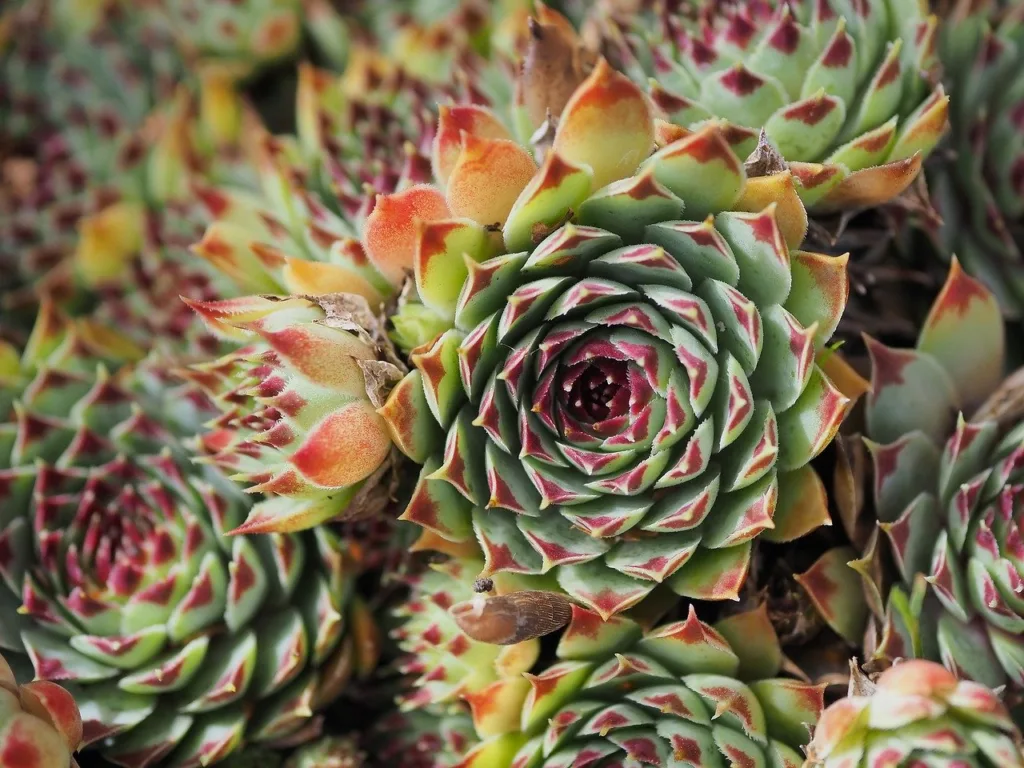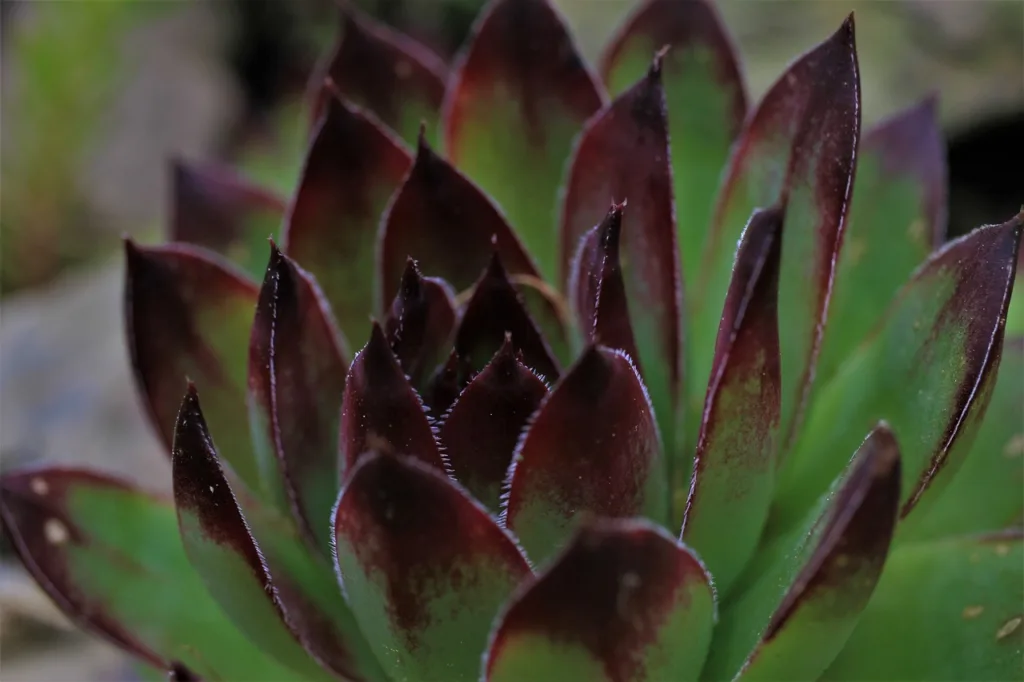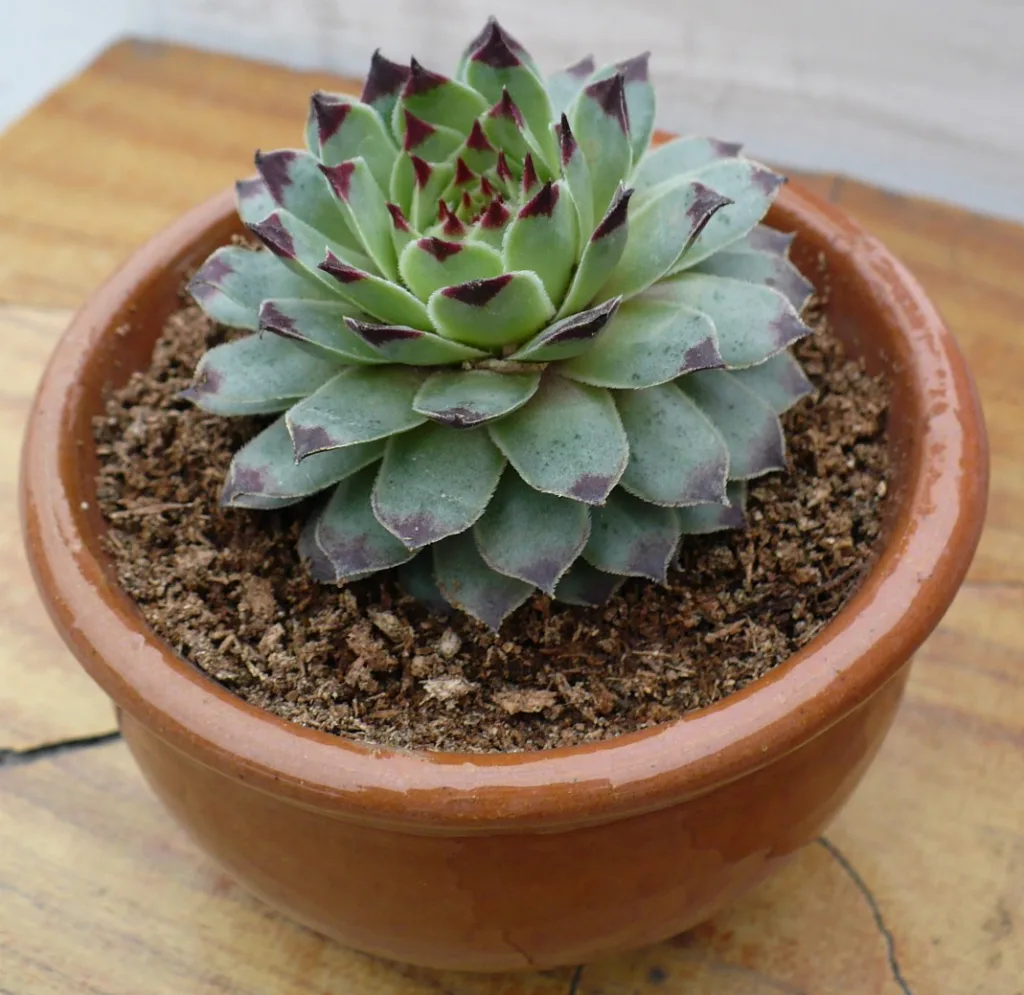Sempervivum Tectorum, commonly known as the Common Houseleek or Hens and Chicks plant, is a fascinating succulent that has gained popularity among gardeners for its unique rosette-shaped leaves and low-maintenance nature.
Whether you are a seasoned succulent lover or a beginner gardener, this comprehensive guide will provide you with all the information you need to successfully grow and care for Sempervivum Tectorum in your garden.
What is Sempervivum Tectorum
Sempervivum Tectorum belongs to the Crassulaceae family and is native to the mountainous regions of Europe. It is a cold-hardy perennial plant that thrives in well-draining soil and full sun.
The name “Sempervivum” comes from the Latin words “semper,” meaning always, and “vivus,” meaning alive, reflecting the plant’s ability to survive in harsh conditions.
This hardy succulent features a central rosette known as the “Hen,” surrounded by smaller rosettes called “Chicks.” As the “Hen” matures, it produces offsets or “Chicks” around its base, creating a beautiful cluster of succulents.
Design Ideas:
- Living Mulch:
- Use Sempervivum tectorum as living mulch around other plants to suppress weeds and provide a unique ground cover.
- Rock Garden Focal Point:
- Plant Common Houseleek in rock gardens, crevices, or between stones, creating an eye-catching focal point with its rosette clusters.
- Container Arrangements:
- Combine Sempervivum tectorum with other succulents and drought-tolerant plants in containers, adding texture and interest to patios and balconies.
| Attribute | Description |
|---|---|
| Botanical Name | Sempervivum tectorum |
| Common Names | Houseleek, Live-forever, Hens and Chicks |
| Family | Crassulaceae |
| Plant Type | Perennial succulent |
| Mature Size | 4-8 inches (height), 6-12 inches (spread) |
| Sun Exposure | Full sun to partial shade |
| Soil Type | Well-draining, sandy-loam |
| Soil pH | Slightly acidic to neutral |
| Bloom Time | Summer |
| Flower Color | Pink, red, yellow, or white |
| Hardiness Zones | 3-8 (may vary based on the variety) |
| Native Area | Europe and parts of Asia |

Choosing the Right Location
To ensure the optimal growth of your Sempervivum Tectorum, it is crucial to select the right location in your garden.
This succulent thrives in areas with full sun exposure, ideally receiving at least six hours of direct sunlight each day.
While it can tolerate some shade, prolonged shade can lead to weak growth and stretched-out rosettes.
Additionally, Sempervivum Tectorum prefers well-draining soil that prevents excess moisture from sitting around its roots.
If your garden has heavy clay soil, consider amending it with organic matter or using raised beds to improve drainage.
Planting Sempervivum Tectorum
Now that you have identified a suitable location, it’s time to plant your Sempervivum Tectorum. Follow these steps for successful planting:
Prepare the soil: Clear the area of any weeds or debris and loosen the soil using a garden fork or tiller. If the soil is heavy, add some organic matter such as compost or well-rotted manure to improve its texture and drainage.
Dig the hole: Dig a hole that is slightly larger than the root ball of your Sempervivum Tectorum. Make sure the hole is deep enough to accommodate the entire plant.
Place the plant: Gently remove the plant from its container and place it in the hole, ensuring that it sits at the same level as it did in the container. Backfill the hole with soil and gently firm it around the base of the plant.
Water the plant: Give your Sempervivum Tectorum a thorough watering immediately after planting to settle the soil and encourage root establishment. Afterward, reduce watering and allow the soil to dry out between waterings.
Watering and Care
Sempervivum Tectorum is a drought-tolerant succulent that requires minimal watering once established. Overwatering can lead to root rot and other issues, so it is important to follow these watering guidelines:
Water deeply: When you do water your Sempervivum Tectorum, make sure to water deeply, allowing the water to penetrate the soil and reach the roots.
Shallow watering can encourage shallow root growth, making the plant more susceptible to drought stress.
Water sparingly: During the active growing season, water your Sempervivum Tectorum only when the soil is completely dry. Overwatering can cause the rosettes to become mushy and rot.
Monitor during dormancy: In winter, Sempervivum Tectorum goes through a period of dormancy. During this time, reduce watering significantly as the plant requires very little moisture to survive.
In addition to watering, there are a few other care tips that will help your Sempervivum Tectorum thrive:
Fertilization: Sempervivum Tectorum does not require frequent fertilization. A lack of nutrients can result in more colorful and vibrant rosettes. If you do decide to fertilize, use a diluted, balanced fertilizer during the active growing season.
Monitoring pests and diseases: Sempervivum Tectorum is generally resistant to pests and diseases. However, overwatering or prolonged moisture can make the plant susceptible to rot and fungal infections. Ensure proper drainage and avoid overwatering to prevent these problems.

Propagation
One of the most enjoyable aspects of growing Sempervivum Tectorum is its ability to propagate readily. This succulent can be propagated through offsets or leaf cuttings. Here’s how you can propagate your Sempervivum Tectorum:
Offset propagation: As the “Hen” matures, it produces smaller rosettes or “Chicks” around its base. Carefully separate these offsets from the main plant by gently twisting them or using a clean, sharp knife. Allow the offsets to dry for a day or two before planting them in well-draining soil.
Leaf-cutting propagation: Select a healthy, mature leaf from your Sempervivum Tectorum. Gently twist the leaf to detach it from the main plant, making sure to include the entire leaf along with its base.
Allow the leaf to dry for a few days before placing it on top of well-draining soil. Mist the soil occasionally to keep it slightly moist, and in a few weeks, you should see tiny rosettes forming at the base of the leaf.
Conclusion
Growing and caring for Sempervivum Tectorum can be a rewarding experience. This hardy succulent provides a stunning focal point in any garden and requires little maintenance.
By providing the right conditions of full sun and well-draining soil, along with proper watering practices, your Sempervivum Tectorum will thrive and delight you with its mesmerizing rosettes.
So why not add some “Hen and Chicks” to your garden and enjoy the beauty and resilience of this remarkable plant?
People Also Ask
- What is the use of Sempervivum tectorum?
- Sempervivum tectorum, commonly known as houseleek, is often grown for its ornamental value. It is used in rock gardens, containers, and green roofs. Some believe it brings good luck and protects against lightning.
- Does Sempervivum like sun or shade?
- Sempervivum prefers full sun. It thrives in well-lit conditions and is known for its ability to tolerate drought and harsh sunlight.
- What is another name for Sempervivum tectorum?
- Sempervivum tectorum is commonly known as houseleek. Other names include live-forever, hens and chicks, or hen, and chicks.
- Is Sempervivum edible?
- While Sempervivum is not typically consumed, it is not considered toxic. However, it’s primarily grown for ornamental purposes, and there is no widespread tradition of eating it. Always exercise caution and verify information before consuming any plant.

